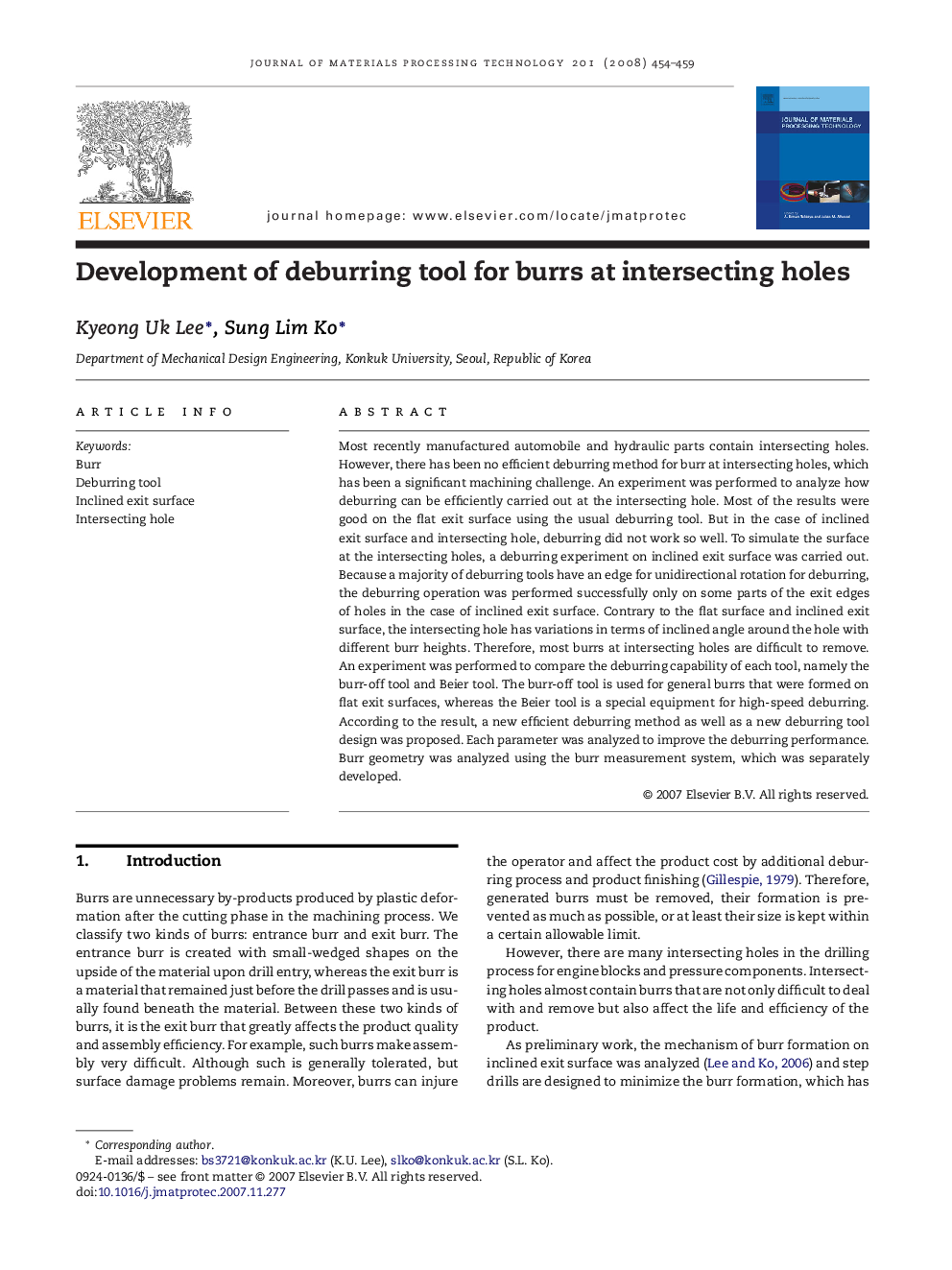| Article ID | Journal | Published Year | Pages | File Type |
|---|---|---|---|---|
| 795585 | Journal of Materials Processing Technology | 2008 | 6 Pages |
Most recently manufactured automobile and hydraulic parts contain intersecting holes. However, there has been no efficient deburring method for burr at intersecting holes, which has been a significant machining challenge. An experiment was performed to analyze how deburring can be efficiently carried out at the intersecting hole. Most of the results were good on the flat exit surface using the usual deburring tool. But in the case of inclined exit surface and intersecting hole, deburring did not work so well. To simulate the surface at the intersecting holes, a deburring experiment on inclined exit surface was carried out. Because a majority of deburring tools have an edge for unidirectional rotation for deburring, the deburring operation was performed successfully only on some parts of the exit edges of holes in the case of inclined exit surface. Contrary to the flat surface and inclined exit surface, the intersecting hole has variations in terms of inclined angle around the hole with different burr heights. Therefore, most burrs at intersecting holes are difficult to remove. An experiment was performed to compare the deburring capability of each tool, namely the burr-off tool and Beier tool. The burr-off tool is used for general burrs that were formed on flat exit surfaces, whereas the Beier tool is a special equipment for high-speed deburring. According to the result, a new efficient deburring method as well as a new deburring tool design was proposed. Each parameter was analyzed to improve the deburring performance. Burr geometry was analyzed using the burr measurement system, which was separately developed.
